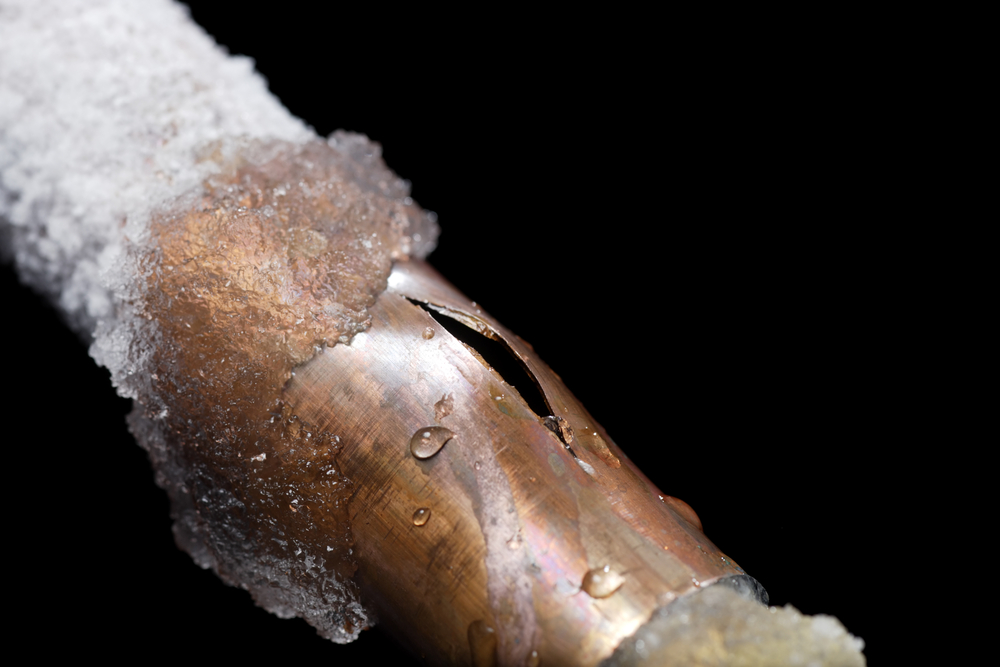The article author is making several good pointers regarding How To Avoid Freezing Pipes in general in this article down the page.

Cold weather can ruin your pipes, particularly by freezing pipes. Here's how to avoid it from occurring and what to do if it does.
Introduction
As temperatures drop, the risk of frozen pipes rises, possibly causing expensive repair services and water damages. Recognizing exactly how to prevent icy pipelines is critical for house owners in cold environments.
Prevention Tips
Shielding prone pipelines
Wrap pipelines in insulation sleeves or use warm tape to shield them from freezing temperature levels. Focus on pipelines in unheated or external locations of the home.
Heating techniques
Keep interior spaces adequately heated, specifically locations with plumbing. Open cabinet doors to enable warm air to circulate around pipes under sinks.
How to determine icy pipelines
Try to find decreased water circulation from faucets, uncommon odors or noises from pipes, and visible frost on exposed pipelines.
Long-Term Solutions
Structural adjustments
Consider rerouting pipes far from exterior wall surfaces or unheated locations. Add extra insulation to attics, basements, and crawl spaces.
Updating insulation
Purchase high-grade insulation for pipes, attic rooms, and walls. Proper insulation helps maintain regular temperatures and lowers the danger of frozen pipelines.
Protecting Outdoor Pipes
Garden hose pipes and exterior faucets
Separate and drain pipes garden hoses prior to winter season. Mount frost-proof faucets or cover exterior faucets with protected caps.
Understanding Frozen Pipes
What creates pipes to freeze?
Pipelines freeze when subjected to temperatures below 32 ° F (0 ° C) for expanded durations. As water inside the pipelines freezes, it increases, taxing the pipe wall surfaces and potentially creating them to rupture.
Dangers and damages
Frozen pipes can bring about water supply disruptions, residential property damages, and pricey repairs. Ruptured pipelines can flood homes and trigger extensive architectural damage.
Indicators of Frozen Pipes
Recognizing frozen pipelines early can prevent them from rupturing.
What to Do If Your Pipelines Freeze
Immediate actions to take
If you presume frozen pipelines, keep faucets available to ease stress as the ice melts. Use a hairdryer or towels soaked in hot water to thaw pipes gradually.
Conclusion
Protecting against icy pipelines requires positive actions and fast actions. By comprehending the causes, signs, and safety nets, home owners can secure their pipes throughout winter.
5 Ways to Prevent Frozen Pipes
Drain Outdoor Faucets and Disconnect Hoses
First, close the shut-off valve that controls the flow of water in the pipe to your outdoor faucet. Then, head outside to disconnect and drain your hose and open the outdoor faucet to allow the water to completely drain out of the line. Turn off the faucet when done. Finally, head back to the shut-off valve and drain the remaining water inside the pipe into a bucket or container. Additionally, if you have a home irrigation system, you should consider hiring an expert to clear the system of water each year.
Insulate Pipes
One of the best and most cost-effective methods for preventing frozen water pipes is to wrap your pipes with insulation. This is especially important for areas in your home that aren’t exposed to heat, such as an attic. We suggest using foam sleeves, which can typically be found at your local hardware store.
Keep Heat Running at 65
Your pipes are located inside your walls, and the temperature there is much colder than the rest of the house. To prevent your pipes from freezing, The Insurance Information Institute suggests that you keep your home heated to at least 65 degrees, even when traveling. You may want to invest in smart devices that can keep an eye on the temperature in your home while you’re away.
Leave Water Dripping
Moving water — even a small trickle — can prevent ice from forming inside your pipes. When freezing temps are imminent, start a drip of water from all faucets that serve exposed pipes. Leaving a few faucets running will also help relieve pressure inside the pipes and help prevent a rupture if the water inside freezes.
Open Cupboard Doors
Warm your kitchen and bathroom pipes by opening cupboards and vanities. You should also leave your interior doors ajar to help warm air circulate evenly throughout your home.

As a keen person who reads about How To Avoid Freezing Pipes, I thought sharing that blog post was mandatory. Liked our blog? Please quickly share it. Help somebody else find it. Many thanks for your time spent reading it.
Schedule Service Now
Comments on “Crucial Advice for Preventing Frozen Plumbing in Winter Conditions”